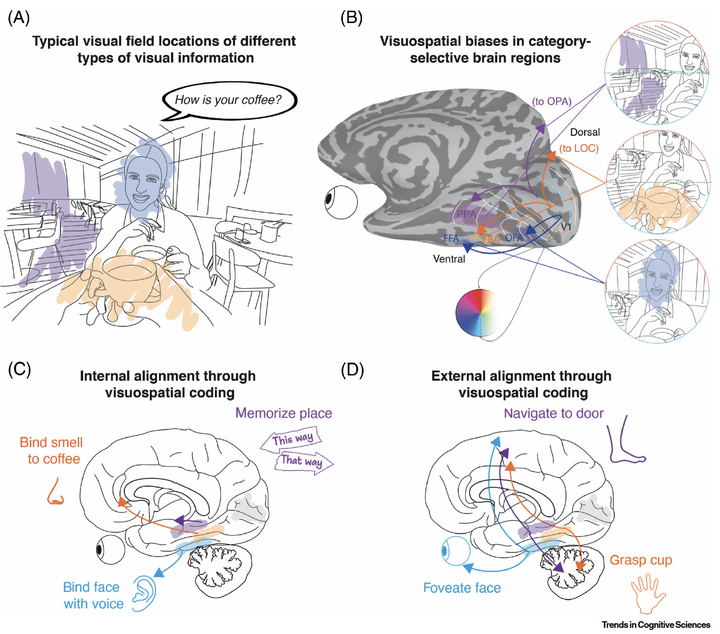Visuospatial coding as ubiquitous scaffolding for human cognition

Abstract
For more than 100 years we have known that the visual field is mapped onto the surface of visual cortex, imposing an inherently spatial reference frame on visual information processing. Recent studies highlight visuospatial coding not only throughout visual cortex, but also brain areas not typically considered visual. Such widespread access to visuospatial coding raises important questions about its role in wider cognitive functioning. Here, we synthesise these recent developments and propose that visuospatial coding scaffolds human cognition by providing a reference frame through which neural computations interface with environmental statistics and task demands via perception–action loops.
Type
Publication
Trends in Cognitive Sciences 2022